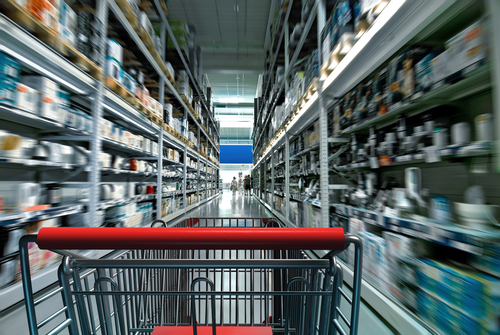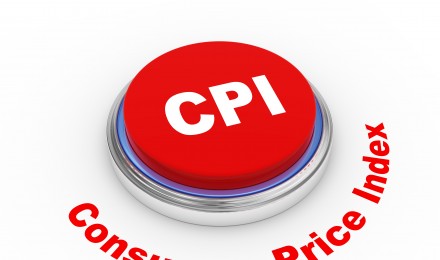The U.S. Bureau of Labor Statistics reports that overall consumer prices for the All Urban Consumer Price Index (CPI-U) did not change in April 2012. In March, the CPI rose 0.3 percent. The survey of Bloomberg economists predicted that prices would remain flat. The CPI-U index rose 2.3 percent on a non-adjusted basis, over the past year. The year-over-year rate for March also came in at 2.3 percent.
After three months of increases, the seasonally adjusted energy index declined 1.7 percent. The drop in the energy index led to declines in other important indexes. For example, most of the energy index decrease has a direct correlation with the 2.6 percent drop in the gasoline index, recorded in April. The AAA reports the price for a gallon of gasoline reached a 10-month high of $3.94 a gallon on April 5,2012. As of May 14, gasoline prices have fallen to an average of $3.73 a gallon.
Ben Bernanke, Chairman of the Federal Reserve Board, stated in late April that the climb in gasoline prices was “temporary” and the Fed expected the inflationary effects of higher gasoline prices to “pass through the system.”
In addition, fuel oil and natural gas fell to 1.1 percent and 1.8 percent, respectively. The indexes for five out of six food group components rose. The overall food index increased 0.2 percent.
For all categories measured by the Consumer Price Index, excluding energy and food or the “core measure,” increased by 0.2 percent—the same percentage change registered in March 2012. On a year-to-year basis, the energy index has increased 0.9 percent. During the same period, the food index rose 3.1 percent.
The following indexes increased in April.
- Shelter
- New vehicles
- Used cars and trucks
- Airline fares
- Medical care
- Apparel
With the exception of the unpredictable energy and food indexes, the moderate increase in the CPI means that inflation has not become an immediate concern for the economy. According to Bernanke, the Fed will hold to the current course and avoid any monetary stimulus. The Fed will step in if prices rise at a slower rate than expected or the economy goes into a tailspin. The Federal Reserve Board has a target of two percent for inflation.
April Retail Sales Report
The momentum of retail sales, which many economists credit to the usually warm winter, came to a halt in April. The U.S. Census Bureau said retail sales increase a weak 0.1 percent—the smallest increase since December 2012, when sales were unchanged from the previous month. The 0.1 percent increase meets the expectation of the economist survey by Bloomberg News.
Apparel sales fell in April. However, other purchases, with the exception of vehicles, service stations and building materials, recorded higher sales than anticipated. Sales on a year-over-year basis increased 6.1 percent. The Census Bureau adjusted March retail sales figure, from 0.8 percent to 0.7 percent. Taken together with the April Consumer Price, today’s economic news suggests inflation remains under control while economic activity slowly increases.
The U.S. Bureau of Labor Statistics reports that overall consumer prices for the All Urban Consumer Price Index (CPI-U) did not change in April 2012. In March, the CPI rose 0.3 percent. The survey of Bloomberg economists predicted that prices would remain flat. The CPI-U index rose 2.3 percent on a non-adjusted basis, over the past year. The year-over-year rate for March also came in at 2.3 percent.
After three months of increases, the seasonally adjusted energy index declined 1.7 percent. The drop in the energy index led to declines in other important indexes. For example, most of the energy index decrease has a direct correlation with the 2.6 percent drop in the gasoline index, recorded in April. The AAA reports the price for a gallon of gasoline reached a 10-month high of $3.94 a gallon on April 5,2012. As of May 14, gasoline prices have fallen to an average of $3.73 a gallon.
Ben Bernanke, Chairman of the Federal Reserve Board, stated in late April that the climb in gasoline prices was “temporary” and the Fed expected the inflationary effects of higher gasoline prices to “pass through the system.”
In addition, fuel oil and natural gas fell to 1.1 percent and 1.8 percent, respectively. The indexes for five out of six food group components rose. The overall food index increased 0.2 percent.
For all categories measured by the Consumer Price Index, excluding energy and food or the “core measure,” increased by 0.2 percent—the same percentage change registered in March 2012. On a year-to-year basis, the energy index has increased 0.9 percent. During the same period, the food index rose 3.1 percent.
The following indexes increased in April.
- Shelter
- New vehicles
- Used cars and trucks
- Airline fares
- Medical care
- Apparel
With the exception of the unpredictable energy and food indexes, the moderate increase in the CPI means that inflation has not become an immediate concern for the economy. According to Bernanke, the Fed will hold to the current course and avoid any monetary stimulus. The Fed will step in if prices rise at a slower rate than expected or the economy goes into a tailspin. The Federal Reserve Board has a target of two percent for inflation.
April Retail Sales Report
The momentum of retail sales, which many economists credit to the usually warm winter, came to a halt in April. The U.S. Census Bureau said retail sales increase a weak 0.1 percent—the smallest increase since December 2012, when sales were unchanged from the previous month. The 0.1 percent increase meets the expectation of the economist survey by Bloomberg News.
Apparel sales fell in April. However, other purchases, with the exception of vehicles, service stations and building materials, recorded higher sales than anticipated. Sales on a year-over-year basis increased 6.1 percent. The Census Bureau adjusted March retail sales figure, from 0.8 percent to 0.7 percent. Taken together with the April Consumer Price, today’s economic news suggests inflation remains under control while economic activity slowly increases.






